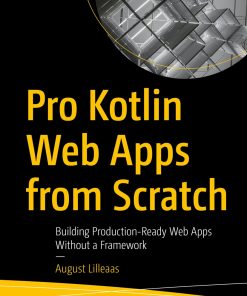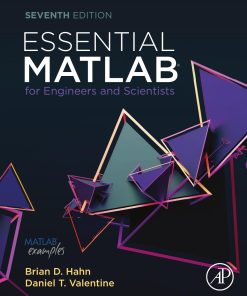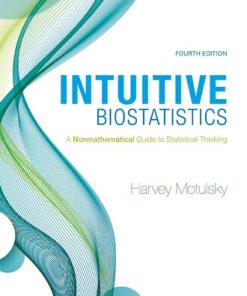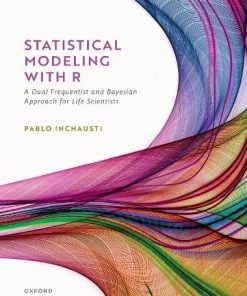(Ebook PDF) Statistical Thinking From Scratch A Primer For Scientists 1st edition by Edge 0192562703 9780192562708 full chapters
$50.00 Original price was: $50.00.$25.00Current price is: $25.00.
Statistical Thinking From Scratch: A Primer For Scientists 1st edition by M. D. Edge – Ebook PDF Instant Download/DeliveryISBN: 0192562703, 9780192562708
Full download Statistical Thinking From Scratch: A Primer For Scientists 1st edition after payment.
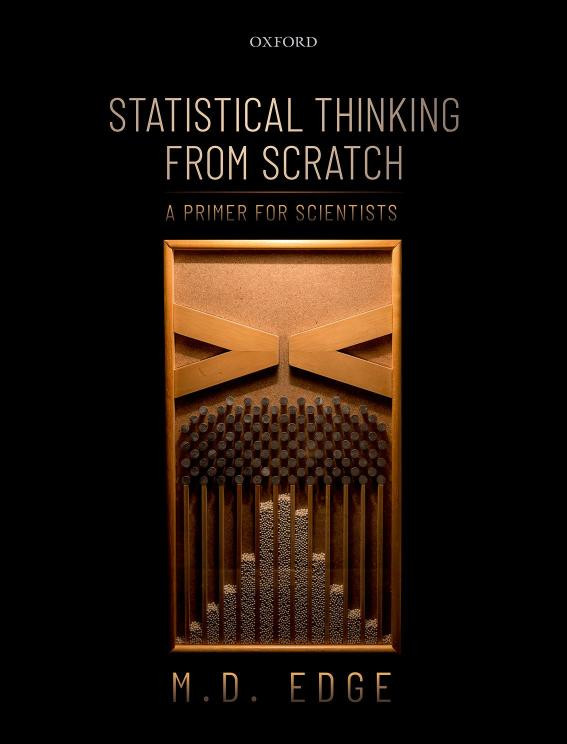
Product details:
ISBN-10 : 0192562703
ISBN-13 : 9780192562708
Author : M. D. Edge
Researchers across the natural and social sciences find themselves navigating tremendous amounts of new data. Making sense of this flood of information requires more than the rote application of formulaic statistical methods. The premise of Statistical Thinking from Scratch is that students who want to become confident data analysts are better served by a deep introduction to a single statistical method than by a cursory overview of many methods. In particular, this book focuses on simple linear regression-a method with close connections to the most important tools in applied statistics-using it as a detailed case study for teaching resampling-based, likelihood-based, and Bayesian approaches to statistical inference. Considering simple linear regression in depth imparts an idea of how statistical procedures are designed, a flavour for the philosophical positions one assumes when applying statistics, and tools to probe the strengths of one’s statistical approach. Key to the book’s novel approach is its mathematical level, which is gentler than most texts for statisticians but more rigorous than most introductory texts for non-statisticians. Statistical Thinking from Scratch is suitable for senior undergraduate and beginning graduate students, professional researchers, and practitioners seeking to improve their understanding of statistical methods across the natural and social sciences, medicine, psychology, public health, business, and other fields.
Statistical Thinking From Scratch: A Primer For Scientists 1st Table of contents:
CHAPTER 1. Encountering data
1.1 Things to come
CHAPTER 2. R and exploratory data analysis
2.1 Interacting with R
2.2 Tutorial: the Iris data
2.3 Chapter summary
2.4 Further reading
CHAPTER 3. The line of best fit
3.1 Defining the “best” fit
3.2 Derivation: finding the least-squares line
3.3 Conclusions
3.4 Chapter summary
3.5 Further reading
CHAPTER 4. Probability and random variables
4.1 [Optional section] The axioms of probability
4.2 Relationships between events: conditional probability and independence
4.3 Bayes’ theorem
4.4 Discrete random variables and distributions
4.5 Continuous random variables and distributions
4.6 Probability density functions
4.7 Families of distributions
4.8 Chapter summary
4.9 Further reading
CHAPTER 5. Properties of random variables
5.1 Expected values and the law of large numbers
5.2 Variance and standard deviation
5.3 Joint distributions, covariance, and correlation
5.4 [Optional section] Conditional distribution, expectation, and variance
5.5 The central limit theorem
5.6 A probabilistic model for simple linear regression
5.7 Chapter summary
5.8 Further reading
Interlude
CHAPTER 6. Properties of point estimators
6.1 Bias
6.2 Variance
6.3 Mean squared error
6.4 Consistency
6.5 Efficiency
6.6 [Optional section] Statistical decision theory and risk
6.7 Robustness
6.8 Estimators for simple linear regression
6.9 Conclusion
6.10 Chapter summary
6.11 Further reading
CHAPTER 7. Interval estimation and inference
7.1 Standard error
7.2 Confidence intervals
7.3 Frequentist inference I: null hypotheses, test statistics, and p values
7.4 Frequentist inference II: alternative hypotheses and the rejection framework
7.5 [Optional section] Connecting hypothesis tests and confidence intervals
7.6 NHST and the abuse of tests
7.6.1 Lack of replication
7.6.2 Ossification of α = 0:05
7.6.3 α = 0:05 as a gatekeeper
7.6.4 Identification of scientific hypothesis with a statistical hypothesis
7.6.5 Neglect of other goals, such as estimation and prediction
7.6.6 A degraded intellectual culture
7.6.7 Evaluating significance tests in light of NHST
7.7 Frequentist inference III: power
7.8 Putting it together: What happens when the sample size increases?
7.9 Chapter summary
7.10 Further reading
CHAPTER 8. Semiparametric estimation and inference
8.1 Semiparametric point estimation using the method of moments
8.1.1 Plug-in estimators
8.1.2 The method of moments
8.2 Semiparametric interval estimation using the bootstrap
8.3 Semiparametric hypothesis testing using permutation tests
8.4 Conclusion
8.5 Chapter summary
8.6 Further reading
CHAPTER 9. Parametric estimation and inference
9.1 Parametric estimation using maximum likelihood
9.1.1 Maximum-likelihood estimation for simple linear regression
9.2 Parametric interval estimation: the direct approach and Fisher information
9.2.1 The direct approach
9.2.2 [Optional subsection] The Fisher information approach
9.3 Parametric hypothesis testing using the Wald test
9.3.1 The Wald test
9.4 [Optional section] Parametric hypothesis testing using the likelihood-ratio test
9.5 Chapter summary
9.6 Further reading
CHAPTER 10. Bayesian estimation and inference
10.1 How to choose a prior distribution?
10.2 The unscaled posterior, conjugacy, and sampling from the posterior
10.3 Bayesian point estimation using Bayes estimators
10.4 Bayesian interval estimation using credible intervals
10.5 [Optional section] Bayesian “hypothesis testing” using Bayes factors
10.6 Conclusion: Bayesian vs. frequentist methods
10.7 Chapter summary
10.8 Further reading
Postlude: models and data
Post.1 Evaluating assumptions
Post.1.1 Plotting
Post.1.2 Tests of assumptions
Post.1.3 Out-of-sample prediction
Post.2 Some extensions of simple linear regression
Post.2.1 Multiple regression
Post.2.2 Generalized linear models
Post.2.3 Mixed models
Post.3 Conclusion
Post.4 Further reading
APPENDIX A. A tour of calculus
A.1 Mathematical functions
A.2 Differential calculus
A.3 Integral calculus
A.4 [Optional section] An explanation of the fundamental theorem of calculus
A.5 Summary
A.6 Further reading
APPENDIX B. More R details
B.1 Modes
B.2 Data structures and data extraction
B.2.1 Vectors
B.2.2 Matrices
B.2.3 Data frames
B.2.4 Lists
B.3 R functions
B.3.1 Getting help
B.3.2 Data creation
B.3.3 Variable information
B.3.4 Math
B.3.5 Plotting
B.3.6 Optimization and model fitting
B.3.7 Distributions
B.3.8 Programming
B.3.9 Data input and output (I/O)
People also search for Statistical Thinking From Scratch: A Primer For Scientists 1st:
statistical thinking from scratch pdf
what is statistical thinking
statistical thinking examples
statistical thinking and data analysis
statistical thinking book
Tags:
Statistical Thinking,Scratch,A Primer,Scientists,Edge
You may also like…
Computers - Computer Science
Earth Sciences - Geography
Coral Reefs of Australia: Perspectives from Beyond the Water’s Edge 1st Edition Sarah M. Hamylton
Computers - Web Development
Pro Kotlin Web Apps from Scratch 1st ed. Edition August Lilleaas
Biology and other natural sciences
Romance - Contemporary Romance
(Ebook PDF) Love from Scratch 1st edition by Kaitlyn Hill 0593379187 9780593379189 full chapters
Romance - Contemporary Romance
Mathematics - Probability
Romance - Contemporary Romance





